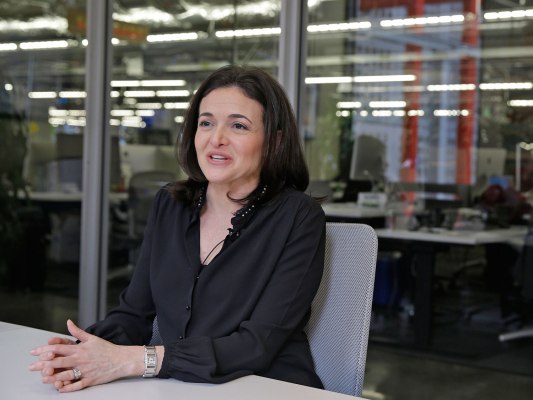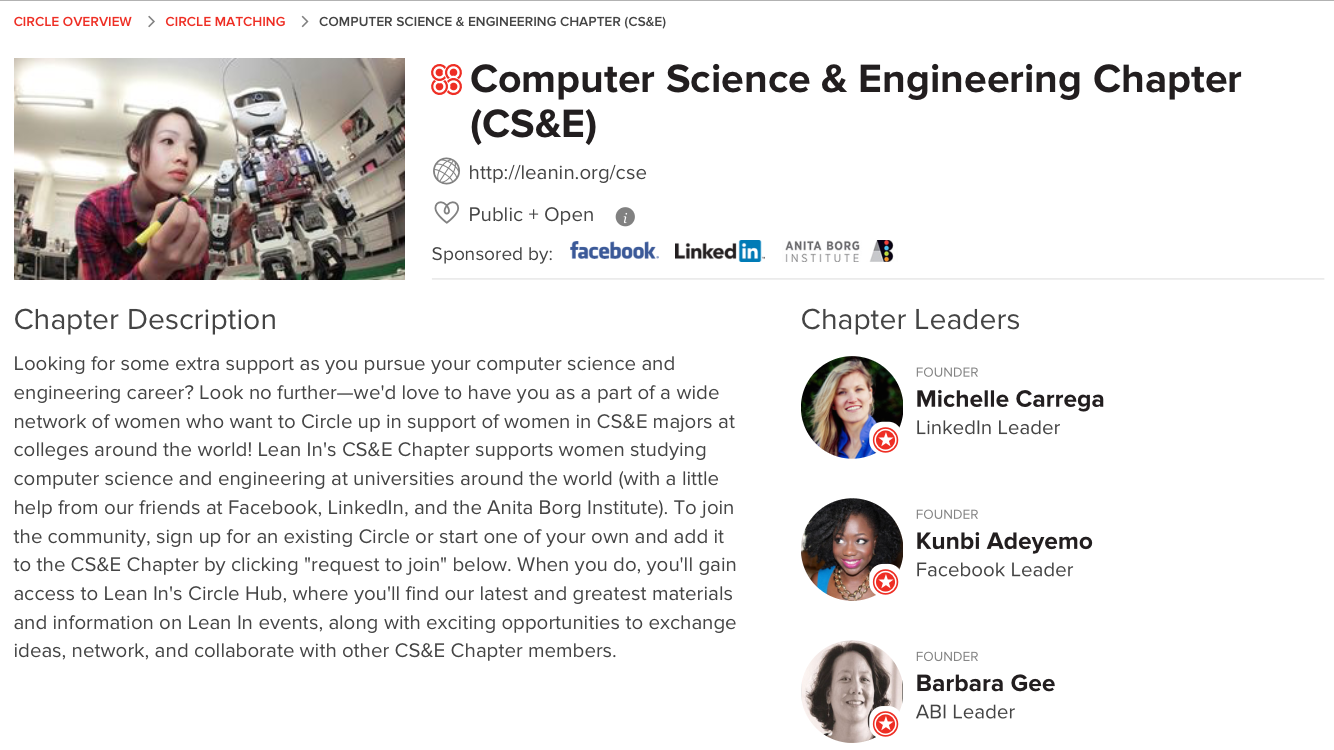Only 18% of computer science majors are women. To help fix this “funnel problem” and balance the genders in tech, Sheryl Sandberg’s Lean In project is starting a “CS&E Chapter”. Potential and current women in computer science and engineering can join the chapter to connect with each other for advising and support.
Facebook COO Sandberg writes “We believe that we can all come together to support women in these fields — we can change the numbers, change the stereotypes, and change the world.”
Lean In’s CS&E Chapter is a partnership with Facebook, Linkedin, and the Anita Borg Institute that will apply the momentum of Sandberg’s book to turn female empowerment discussions into action. University Of Tennessee Lean In Circle founder Denise Gosnell tells me “I’m glad to see the discussion has now moved towards ‘how do we develop effective strategies to see more women in computer science?'”
There’s plenty of “awareness” of the problem at this point. A year of sexism incidents and lopsided diversity reports have made it crystal clear that women are underrepresented in technology. And it’s getting worse. In 1985, women made up 35% of CS majors, compared to the 18% today.
The causes have been identified. Women don’t get enough encouragement and mentorship at young age to stick with hard science disciplines like coding. And the bro culture of misogyny that permeates tech companies drive women away who do make it that far. Even Sandberg’s own Facebook suffers from a male-dominated engineering culture. Just 15% of the company’s global tech workers are female.
Sandberg’s book Lean In teaches women to be assertive at work and home, view “bossiness” as a virtue not a flaw, and ask for the responsibility and compensation their hard work merits. She launched the Lean In Circles program to give women mentorship and allies across industries. “Since 2013, more than 21,500 Circles have been formed in more than 97 countries and on more than 330 college campuses” Sandberg says.
But there’s no denying that the economy is rapidly shifting towards technology, and those without computer programming skills are being left behind. If women don’t get the engineering education and support in tech jobs, the income gap with men will only widen.
LinkedIn CEO Jeff Weiner writes “For me, this isn’t just a professional matter, it’s a personal one as well. Growing up, my dad would always tell me I could do anything I set my mind to. I tell the same thing to my two young daughters. I’d like to them to grow up in a world where those words ring as true for them as they did for me.”
So Lean In’s CS&E Chapter targets tech’s gender problems directly in hopes of spurring real action and results.
First, it wants women to form CS&E Circles so when things get tough on the road to engineering degrees or jobs, they have someone to call who’s been through it. Then once they have roles in tech, they can get guidance on navigating issues like sexual harassment, misogeny, wage disparity, and attaining leadership positions.
Gosnell says women who join a CS&E Circle will “immediately get a group of people that can reach out to. Once they get over the initial hump of asking someone, I think there will be discussions of ‘this situation happened to me. How did you handle it? Did this work?'”
Sandberg says “Circles encourage [women] to speak up, enroll in classes they were afraid to take, and apply for jobs even if they aren’t sure they’re ready.” They can provide more than just mentorship too. “At the University of Tennessee, a Circle of women engineers are not just supporting each other, but also raising funds to send women to technical conferences around the US” Sandberg notes.
The plan won’t eradicate inequality, but it could equip women with the resources to handle it now and dismantle it over time. If tech is going to have the diversity of perspective and sheer volume of talent necessary to keep growing, we all need women to feel welcome writing code.

